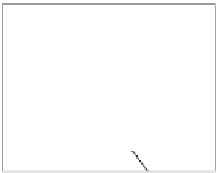Information Technology Reference
In-Depth Information
2
2
2
f(x;1.5)
f(x;2)
f(x;4)
1.5
1.5
1.5
1
1
1
0.5
0.5
0.5
x
x
x
0
0
0
−4
−2
0
2
4
−4
−2
0
2
4
−4
−2
0
2
4
Fig. 2.7 Three members of the
f
(
x
;
α
)
family of Example 2.5, with
α
=1
.
5
,
2
,and
4, from left to right.
15
V(
α
)
H
R
2
(
α
)
0.8
10
0.4
0
5
α
α
−0.6
0
0
1
2
3
4
5
0
1
2
3
4
5
(a)
(b)
Fig. 2.8
MSE (a) and
R
2
EE
(b) for the
f
(
x
;
α
)
family of Example 2.5, as functions
of
α
.
Figure 2.7 shows three members of the
f
(
x
;
α
) family. For
α
→
0 or
α
→
+
one obtains PDFs with components that are progressively more symmet-
ric around the origin, whereas other components correspond to progressively
longer tails.
Figure 2.8 shows the variance and Rényi's quadratic entropy for the
f
(
x
;
α
)
family, plotted as functions of
α
. The variance (the same as the MSE since each
family member is symmetric) has a minimum at
α
=1.Ifthe
f
(
x
;
α
) family
represented an error PDF family,
f
(
e
;
α
), one wouldn't certainly be satisfied
with a convergence to the
f
(
e
;1) PDF. One would surely be happier with a
convergence towards
f
(
e
;0)or
f
(
e
;+
∞
∞
), corresponding to entropy minima.
2.3.5 Risk Functionals and Probability of Error
Traditionally, the role played by different risk functionals has been some-
what overlooked. There has been a persistent belief that the choice of loss
function is more a computational issue than an influencing factor in system





































































































































